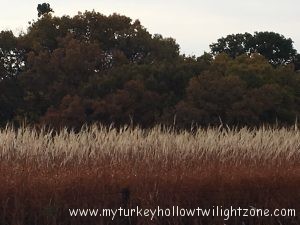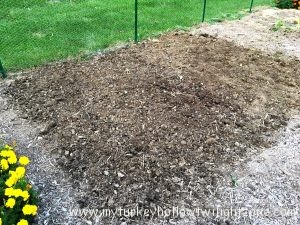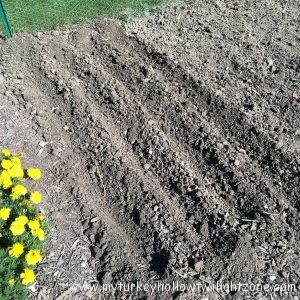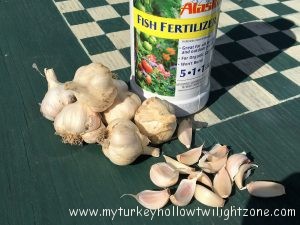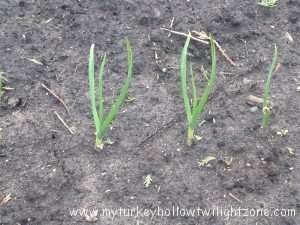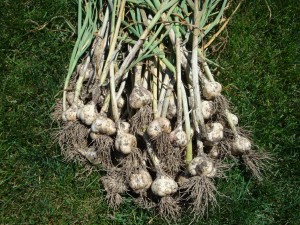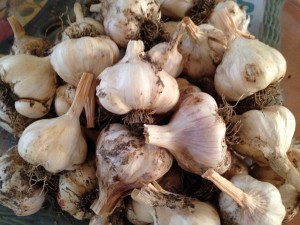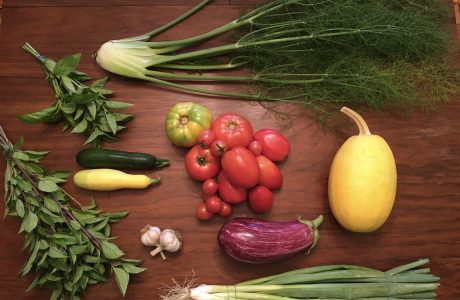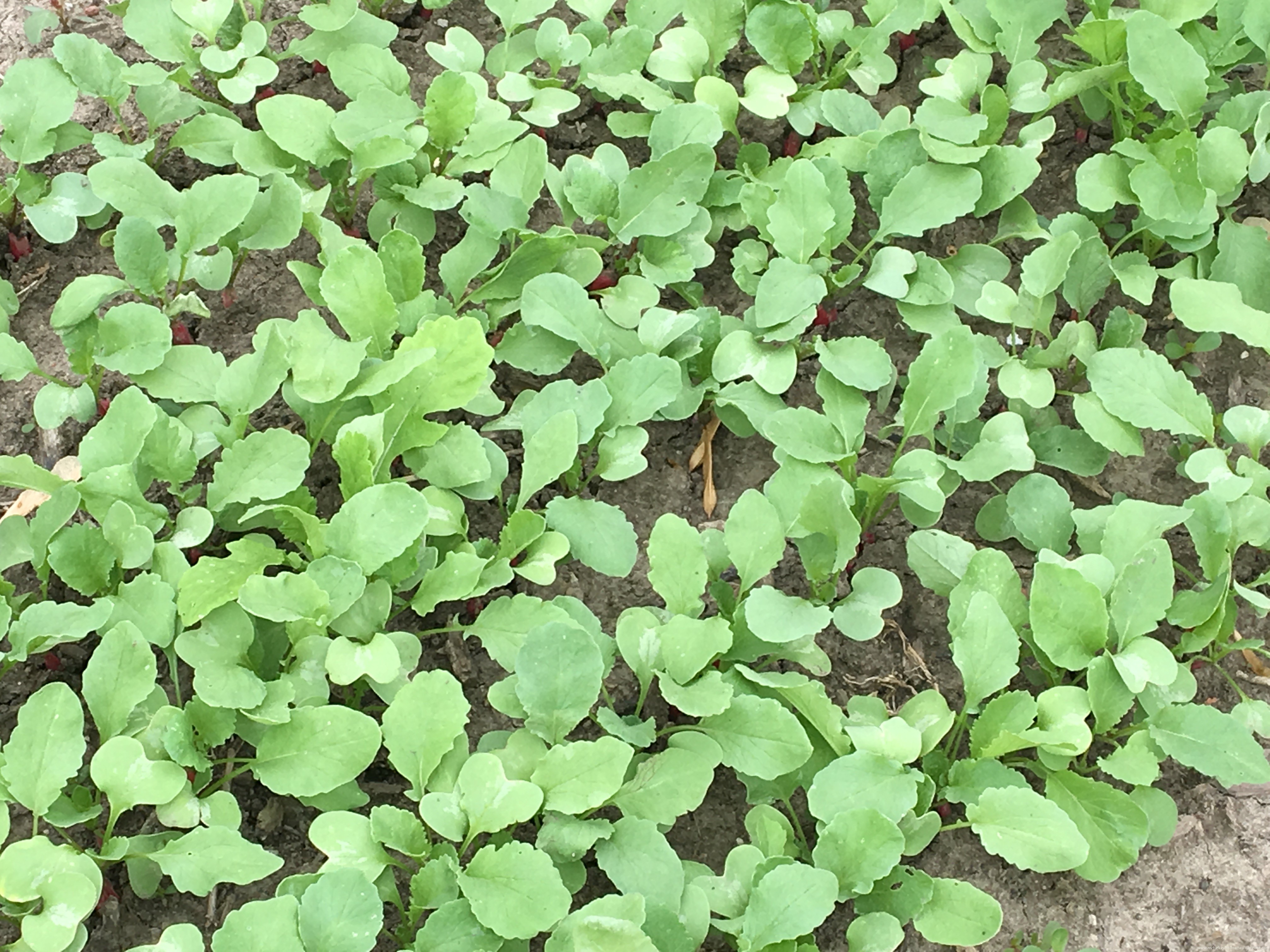I love garlic! I can’t imagine a world without it! I’ve been growing garlic for so long I can’t remember where I purchased the initial bulbs or even what kind it is except to say that it is a softneck variety which will keep for about a year in the storage room in my basement. Hardneck varieties don’t generally store quite as long. So if you’re a garlic lover like me, with just a little planning, growing garlic in the Midwest is easy.
When To Plant
The first year that I planted garlic, I did it in the Spring. The reason was because I tried for 2 years to find garlic bulbs at local nurseries in the fall, but no one had any. It’s possible that has changed over the years but I have never had to find out. After planting the first year, I just keep using the best and biggest bulbs to divide and plant every October. I haven’t paid for garlic in years.
Plant in the beautiful month of October, (Pampas Grass in October along the road where I live). October is a beautiful month in the Midwest.
I also have, in recent years, begun to purchase more of my seeds online, and I have discovered that you may be able to find things you can’t just walk into a nursery and pick up. So this may be a better option when looking for garlic seed bulbs.
Where To Plant
Garlic needs a sunny area with well draining soil. My soil has a tendency to be clay-like so I started all my garden beds with top soil using the “no dig” garden approach and compost.
In October, I select an area in the garden that hasn’t grown garlic or any plant in the onion family for about 3 years. I loosen the soil and work in a little compost from my compost bin.
How To Plant
For the best bulbs, plant in the fall. My original garlic bed was planted in the spring for no other reason than for a couple of years I could not find “seed” garlic bulbs to plant in October. There were, however, bulbs to be found in the Spring which I tried to save to plant in the fall, but they dried up and were of no use. The next Spring I found bulbs and planted them. In the late summer, I harvested my small but delicious bulbs and used the biggest and best bulbs to divide and plant that same October.
Each year I have continued to save the biggest and best to plant in October and each year in early summer I have garlic bulbs ready to harvest. And they always get bigger and bigger.
Unfortunately, I don’t remember what variety of garlic I have other than it is of the softneck group. I typically do not get the garlic scapes that hardneck varieties produce (although I did get a couple one year) but the softneck bulbs have an amazing storage life. These bulbs last until the next years crop is ready.
Even though I have read that softneck garlic tends to grow best in mild climates, it grows just fine in my zone 5a climate. If you continue to save and use the what you’re growing, it will become acclimated to the soil type and climate you live in.
As I said, I started my garden beds by topping them with top soil to enrich the clay-like soil I have to make it a little more well drained. My garden is in a pretty sunny part of my yard so it gets sun most of the day.
When you’re ready to plant, break up the soil and mix in a little compost. Make trenches 2-3 inches deep in rows about 8 inches apart.
Divide the bulbs into individual cloves. I use the biggest cloves for planting and use the smaller ones for cooking. The bigger the clove is the bigger the bulb will be.
I tend to try to grow the most I possibly can into my garden beds therefore I plant the cloves (with the pointy end up) about 4 inches apart. This compact, intensive gardening does deplete the soil a bit more than traditional gardening but crop rotation helps out with replacing depleted nutrients.
The cloves should be planted about 2 inches deep. Before I cover them with soil, I dilute fish emulsion in a ratio of about 1 tablespoon per gallon of water and sprinkle this solution in the trench next to the cloves. Then cover with soil.
You can put a little mulch or straw (my choice) over the area to keep weeds down and the soil moist. This is not absolutely necessary though. There have been years I haven’t taken the time to do this and I still had garlic in the spring. Although it probably is the best practice to do so.
In The Spring
In the spring, you will see the garlic greens peeking through the soil pretty early. Usually, I start seeing them in late March. Keep them watered with about 1 inch of water per week
This is also the time I would use an additional application of fish emulsion.
After the first of June you can stop watering to encourage the bulbs to fully form.
When the green tops start to brown and droop to the side, the garlic is ready to harvest.
Harvesting Garlic
When your garlic is ready to harvest it would appear you can just reach down and pull it out of the ground like you would an onion. Don’t do it! You may end up breaking the stalk off with your garlic bulb still in the ground. I use a garden fork to loosen the soil around the garlic. Then gently pull the garlic out of the loosened soil.
Once the garlic is out of the ground, the next step is to cure it. Lay it out or hang off the ground in a dry warm area shaded from the sun and out of the weather. At my house, that’s the garage. I hang it there for about 2 weeks or so until the outside is papery thin and dry.
You can also braid your garlic and make it fancy, but in all honesty, with a full-time nursing job, I don’t have time to go to those lengths. Once it’s dry, I trim the roots and cut the tops down to about an inch above the bulb.
I have always kept my garlic in the storage room in the basement in plastic mesh baskets so air can circulate around the bulbs.
It’s October, and I am still finishing up using the garlic from the previous years harvest for cooking purposes. It’s almost gone, and as long as it seems firm, I’ll use it.
As a side note garlic has amazing cardiovascular health benefits. So if you needed another reason to eat and grow garlic, now you have it.
Happy planting!
“We are a participant in the Amazon Services LLC Associates Program, an affiliate advertising program designed to provide a means for us to earn fees by linking to Amazon.com and affiliated sites.”
© 2016 – 2020, Pamela. All rights reserved.
